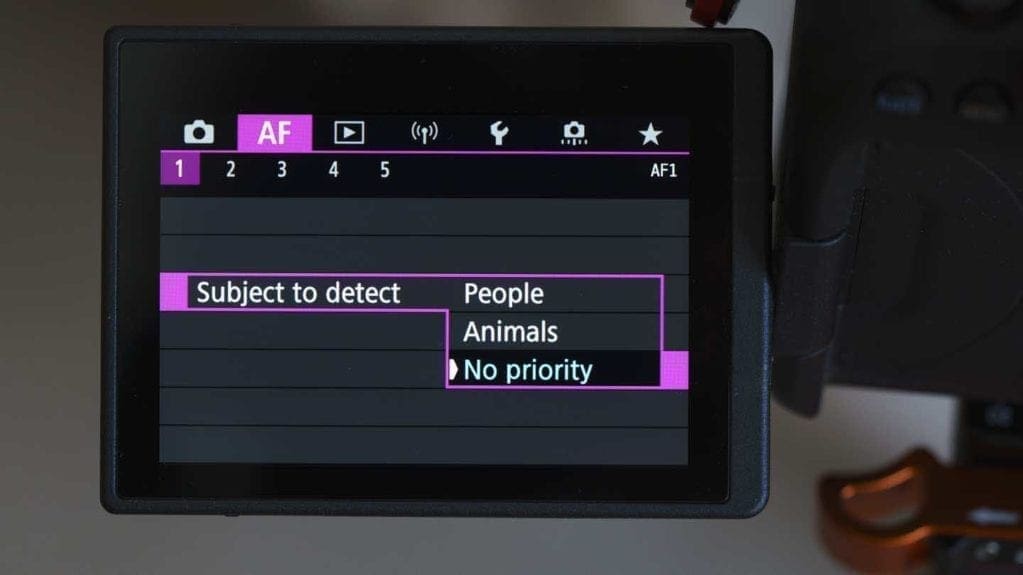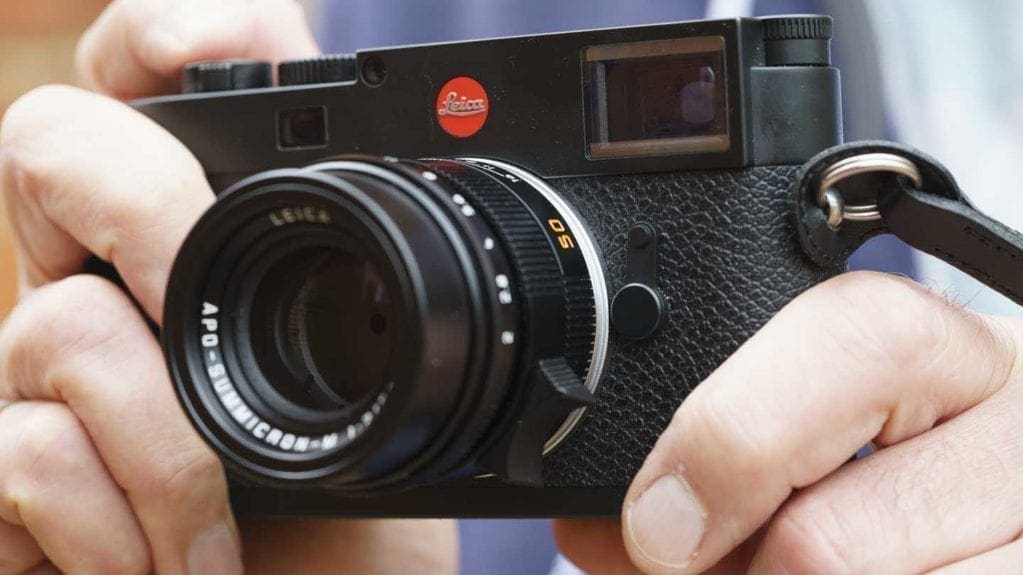As 2020 draws to a welcome close, I find myself contemplating what 2021 might bring for photographers (beyond kicking Covid-19 into touch and getting our lives back to normal very soon). There have been some great developments in camera and photographic technology over the last few years, with mirrorless cameras coming on in leaps and bounds, but what can we expect from the next 12 months? Here’s what I think could be around the corner.

1. Human and animal eye AF merged
Eye detection or Eye AF for humans has proved hugely beneficial to lots of photographers, but especially wedding and portrait pros as it means they can concentrate on the composition while the camera takes care of the focusing. It also means that you can shoot with the aperture wide open with confidence and not have to worry that the subject’s nose or eyebrows will be in focus instead of their eyes.
The addition of animal eye detection has extended this convenience to pet and (in some cases) wildlife photographers. However, in many cases, the current technology requires you to switch between human and animal eye detection. Although that can be handy sometimes, it would be nice if the camera could just look for any eyes in the frame. This would mean that if you’re shooting a family group the camera will detect the kids’ and the pet dog’s eyes and you just need to decide which you’re going to make the focus point. It also means that if the dog should turn to look at its owner, the camera will switch from focusing on the canine eyes to the human eyes.

2. More eyes detected
Artificial intelligence is behind a camera’s ability to spot eyes in a scene and as this is honed with more data and increased processing power, we can expect to see a greater range of subjects added to the detection list. The Canon EOS R5 and EOS R6 already do a great job with detecting a wide range of animals and Olympus, for example, recently added bird-detection to the Olympus OM-D E-M1X. Hopefully we will see other brands follow during the next 12 months.

3. In-camera level recording
I’ve never been very good at getting horizons level in my shots. That’s why I always turn on the electronic level as soon as I’m handed a new camera.
If you’re shooting with the viewfinder, the electronic level is a major bonus. You can see straight away whether everything is aligned or not. However, if you’re using the screen to compose the image, it can be trickier. In bright light, for example, it’s hard to see the line at all. On other occasions, it’s hard to see if the line has changed colour or is level – especially if the screen won’t tilt towards you.
However, it struck me a while ago that if the camera can tell whether it’s level, it could also record the angle at which the shot was taken. And if that information is recorded with the image, then surely it wouldn’t be too much of a drama for the image to be levelled post-capture? This could be done in-camera or using software like Adobe Photoshop, Lightroom or Camera Raw.
Of course, these software packages have levelling tools, but they rely on there being something straight in the scene. And although the automatic tools can work quite well, they don’t always get it right.

4. Customisable menus
My Menu screens and Quick Menus are all well and good, but what I’d like to see is fully customisable menus on cameras. Instead of having to assign a small selection of features to a specific page, I’d like to be able to rearrange the whole menu. Ideally, I’d like to be able to highlight a feature and drag it to where you want it to appear – just like arranging the apps on a smartphone.
It might be a bit dangerous to delete any items from the menu, but perhaps there could be a page that is normally hidden and you could assign any unwanted features to it. Then, if you realised that you needed to use a normally unwanted feature, you could reveal the hidden page to find it.
As well as making it easier to find the features you use most often, a fully configurable menu would enable you to group features in a way that works for your style of photography or videography. If you’re not into video at all, for example, you could hide all those features.
Creating a completely customisable menu would also save manufacturers some heartache trying to work out the optimum configuration for all the different potential uses of a camera. They can leave it to the photographers to find what works for them.

5. Mirrorless Canon EOS-1D X Mark III and Nikon D6 equivalents
Now that Canon and Nikon have both got serious about mirrorless cameras, it’s time that they brought out mirrorless models that are designed to take the place of their flagship SLRs, the Canon EOS-1D X Mark III and Nikon D6.
Like the DSLRs, these full-frame mirrorless cameras wouldn’t necessarily have the highest-resolution sensors, but they would excel in low light and at noise control. They would also have class-leading electronic viewfinders, tank-like build quality and exceptional autofocus performance.
7. An APS-C format Canon EOS R camera
Canon currently has four lens mounts, EF and EF-S for its full-frame and APS-C format DSLRs respectively and EF-M and RF for it APS-C and full-frame mirrorless cameras. That gets confusing even for Canon photographers, but it’s a minefield for anyone looking to invest in the brand for the first time.
Canon has said that the EOS M range of APS-C format cameras will continue, but while the cameras have improved a lot over recent years, the company has never taken the lens range very seriously. Now that the Canon EOS R range of full-frame mirrorless cameras has come a long with the new RF lens mount, it would seem a good time for Canon to adopt a universal lens mount across its mirrorless camera range. This is something that Nikon and Sony do and it’s reassuring to photographers to know that they can use any of their Nikon Z-mount or Sony E-mount lenses on any of their Nikon Z or Sony E-mount cameras respectively.

8. Entry-level mirrorless cameras from Canon and Nikon
Although a lot of the market activity these days is around high-end kit, there are still many people who want to invest in their first ‘proper’ camera. There are lots of advantages to starting with a mirrorless camera – the viewfinder shows the image as it will be captured, for example, and the switch between using the viewfinder and screen is seamless. However, Nikon’s most entry-level mirrorless camera, the Nikon Z50, is aimed at enthusiasts rather than beginners, and as previously mentioned, Canon’s mirrorless camera range is a confusing mix of two lens mounts – EF-M and RF.
It would be good to see mirrorless versions of the Nikon D3500 and Canon EOS 2000D / Canon EOS Rebel T7 in 2021.
9. Global Shutter
Instead of the signal from the photoreceptors on a sensor being read in sequence, global shutter technology enables it to be read simultaneously from every pixel site. It means an end to the problem of rolling shutter that can make vertical lines lean when the camera is panned and that makes straight moving objects (like a swinging golf club) bend.
As well as enabling faster shutter speeds and frame rates, global shutter technology might also make it possible to apply different exposure times across the sensor. That could introduce a whole new method of HDR (high dynamic range) photography. Exposure bracketing and high-resolution compositing could also take a step forward with multiple exposures being possible in a fraction of the time that is currently required.
I wonder if we could look at the live view image on the back of a camera and manipulate the exposure of different parts of the scene with taps and strokes before taking the shot?
While there have been lots of developments in this area, we’ve yet to see a global shutter appear in a commercially available consumer camera. Maybe 2021 will be the year it finally comes along?

10. A Leica M camera with an electronic viewfinder built-in
As much as I appreciate modern autofocus technology, I enjoy using manual focus lenses – I find that they’re a great way of really connecting with your photography.
Many photographers consider Leica’s M series cameras to have the ultimate build quality and the company’s optics are superb, but to be frank, rangefinder focusing is outdated. Leica currently offers an optional external electronic viewfinder that is compatible with models like the Leica M10R but a built-in viewfinder would be much more elegant.
While we’re at it, how about a tilting touchscreen? That’s probably enough to make some Leica M photographers feel faint, but I’d love to see the M range make use of some more modern technology.


